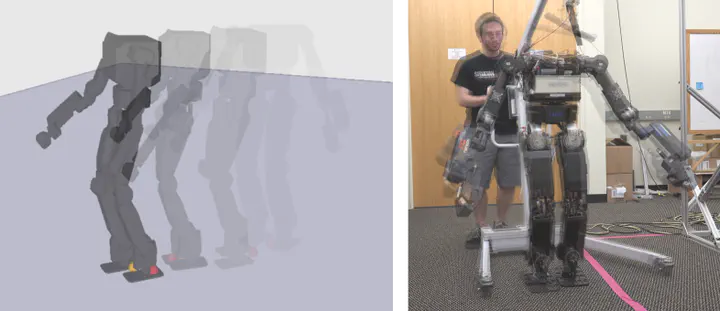Work those arms: Toward dynamic and stable humanoid walking that optimizes full-body motion

Abstract
Humanoid robots are designed with dozens of actuated joints to suit a variety of tasks, but walking controllers rarely make the best use of all of this freedom. We present a framework for maximizing the use of the full humanoid body for the purpose of stable dynamic locomotion, which requires no restriction to a planning template (e.g. LIPM). Using a hybrid zero dynamics (HZD) framework, this approach optimizes a set of outputs which provides requirements for the motion for all actuated links, including arms. These output equations are then rapidly solved by a whole-body inverse-kinematic (IK) solver, providing a set of joint trajectories to the robot. We apply this procedure to a simulation of the humanoid robot, DRC-HUBO, which has over 27 actuators. As a consequence, the resulting gaits swing their arms, not by a user defining swinging motions a priori or superimposing them on gaits post hoc, but as an emergent behavior from optimizing the dynamic gait. We also present preliminary dynamic walking experiments with DRC-HUBO in hardware, thereby building a case that hybrid zero dynamics as augmented by inverse kinematics (HZD+IK) is becoming a viable approach for controlling the full complexity of humanoid locomotion.